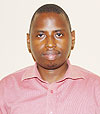Christmas eve, This newspaper reported that more than 75 percent of the medical students at the National University of Rwanda, failed their final exams. To be precise, only 14 out of 58 students passed the November – December examinations.


Christmas eve, This newspaper reported that more than 75 percent of the medical students at the National University of Rwanda, failed their final exams.
To be precise, only 14 out of 58 students passed the November – December examinations.
Understandably, this festive season may not be the best for those who failed, have to prepare for a second sitting next month.
The university largely attributed the high failure to the introduction of external examiners system, which the students were not used to. On their part, the students, who were fresh from a one-year pre-graduation clinical internship, blamed the external examiners – drawn from among others, Uganda, Kenya and South Africa – for not being fair.
They claim the examiners gave them too little time to; go through patients’ medical history, carry out comprehensive physical examinations and give a diagnosis and, sometimes, also present a report to the examining panel— all in a space of 15 minutes - Kind of a logical argument.
The idea of introducing external examiners is laudable. Indeed, the university believes it will help them "improve the quality of medical doctors that we produce. Doctors who can compete favorably on the regional labour market,” according Dr Bon Fils Safari, the director of quality assurance.
Examination constitutes such a small fraction of the whole problem. External examiners may only help identify the real challenges, but expecting them to ‘improve quality’ of your products is quite unrealistic. It is a case of treating symptoms, not the real disease. The disease our education system is suffering from is not ‘unsuitable’ examinations or examiners; rather, it is deeply rooted in the system itself.
You can have the best examiners and every candidate fails, but, in the end, the problem has not been tackled – unless your target was simply to identify the problem. While the 75 percent failure rate may not be a ‘catastrophe’, as one NUR official said, it could as well mean that some former students may have graduated in the past on the basis of second-rate examinations.
Yet, NUR should not revert to local examiners or prevailing on external examiners to be more considerate. The external examinations system has only confirmed what has already been pointed out in the past. About a year ago, President Paul Kagame, while addressing the university community, urged relevant authorities to revise tertiary curricula and make them more responsive to the needs and demands of the industry. Many employers have also repeatedly argued that our graduates are highly wanting, when it comes to practical skills.
As I tried to find out whether our medical students accumulate more theoretical knowledge than practical skills, I got the feeling that, although medical students start their practical work as early as 3rd year, they remain a highly theoretical lot, as much as the other students.
An NUR final year medical student told me that the only ‘meaningful and significant’ industrial attachment comes in their sixth year. Others, he said, last for two or slightly more weeks, which is not enough for such a sensitive profession.
"For instance, you are taught that Plasmodium malariae is the parasite that causes Malaria and they tell you all its symptoms. However, you don’t complement that theoretical part by going to a hospital to observe these symptoms on a patient, and their varying levels. Once a student observes such symptoms, they don’t forget, and when they get involved in diagnosing and treating patients, they will remember it forever,” he told me. He added that the current system is such that someone is ‘stuffed’ with theory after theory, and have a chance for clinical experience only after a long time. "We are used to being spoon-fed,” he concluded.
To reverse the trend, the Ministry of Education and our institutions of higher learning should, as a matter of urgency, look into some competitive curricula across the region and beyond, compare them with ours, ascertain the needs of our labour market, and then come up with syllabi that truly reflect our aspirations. Emphasis must also be put on practical training, especially for scientific disciplines.
This challenge is not limited to medicine; it cuts across almost all academic disciplines and professions. Given the financial implications involved, we may need to prioritize, by first upgrading the curricula of the most sensitive professions as well as those that are critical to the achievement of this country’s development programmes, as spelled out in both the Economic Development and Poverty Reduction Strategy (EDPRS) and Vision 2020.
Then, a system for periodical review should be developed, to ensure that the curricula always match the changing times and new findings, especially in the areas of science and technology.
In addition, workplace, such as hospitals, should develop and deepen a culture of on-the-job training and evaluation of their staff. This will not only improve the quality of staff, but will also encourage workers to dedicate time to reading extensively and learning new ways of doing things. This should be our New Year’s resolution.
munyanezason@yahoo.com
The writer is a training editor with The New Times and 1st VP of Rwanda Journalists Association


